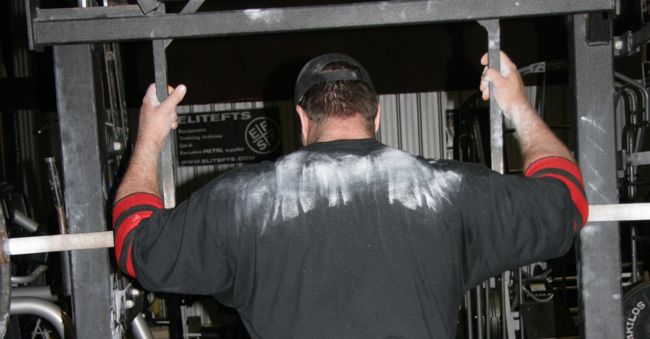
I remember seeing a poster once that read simply, “The back is to lifters what the biceps are to bodybuilders.” It stuck with me because I thought it was so true. Take a look at the most successful lifters and you’ll start noticing that they all have huge, strong backs.
For many people, back training gets pushed aside in the gym in favor of the stuff they see in the mirrors. After all, everyone knows that you only need to train pecs, biceps, and abs. Even when back work is done, it’s usually some one-arm dumbbell rows performed with atrocious form or lat pull-downs that are more hip extension than anything else.
However, the real lifters among us know the benefit of a big, strong back. For years, some of the best coaches have spoken of the benefit of not only doing equal amounts of pulling movements and pushing movements but sometimes even more than that. For us, rows and pull-ups are just as important to our training as benching or any other lift. That’s a good thing, but sometimes you need to shake it up a little and do something you aren't used to. So here are some lifts that you may not have done before or you pushed them into the background in your training.
Front squats
I know—front squats? For the back? I thought those were a quad exercise! You’re right. They are. But an often forgotten benefit of front squats is the amount of posterior recruitment they require in order to maintain a vertical torso. Front squats can be a great back exercise if you do them with good form and keep an upright torso the entire time. I recommend using a clean grip instead of the crossover because it keeps both shoulder level whereas the crossover grip will result in one shoulder being higher than the other. If you have trouble with this grip, work on your wrist mobility and keep at it. It’s worth the trouble.
Remember to keep your head looking forward and maintain a neutral neck position and a flat back.
Snatch grip deadlift
I've become a big fan of the snatch grip deadlift because of all the benefits of the movement. In addition to working lots of big muscles, the snatch grip deadlift can help improve hip mobility and is a great exercise for strengthening the entire back. Due to the wide grip, you have to get into a lower starting position to pick up the bar, which can be helpful for people who have an issue getting down to the bar on a conventional deadlift or for those who are weak off the floor deadlifting. Another benefit to the wide grip is an increased recruitment of muscles in the upper back and posterior shoulder. Watch the video for tips including how to determine your grip width.
Snatch grip Romanian deadlift
Regular Romanian deadlifts are a great posterior chain developer and have been used by serious lifters for years. This simple change to the classic movement adds more benefits. Like the snatch grip deadlift, snatch grip Romanian deadlifts increase the recruitment of the upper back musculature due to the wide grip. This also increases range of motion. Again, remember to keep a neutral spine and neck position and focus on hinging the hips. For both the snatch grip deadlift and Romanian deadlift, you might want to consider using straps, as you’ll find that your grip will get pretty tired after a few reps with significant weight.
Pendlay rows
The Pendlay row is an excellent movement that I’ve been doing for a long time and I really feel it should be in everybody’s program. It’s also very simple. Basically, the Pendlay row is a bent over barbell row with a dead stop on the floor at the bottom of every rep. Hinge at the hip, keep a flat back and neutral neck, pull the bar straight off the floor to the spot right under your chest (xiphoid process) by flexing the lats and upper back, and return it to position on the floor after each rep. The great thing about this exercise is that you don’t fatigue the muscles of the lower back during the row and it makes it much more difficult to cheat by getting more vertical as you go along.
Here's a video from Glenn Pendlay describing the movement.
When it comes to training, I've always been of the mindset that simpler is better. I like to keep things basic, and I’ve never been a fan of some of the fancy, complicated stuff that is so common today. I could have listed a near endless number of nonsense movements here just for the sake of variety, but that wouldn’t do you any good. The exercises above may not be that exotic, but in my experience, they aren't common either. They are simple variations on core movements that give you the most bang for your buck. Of course, your training should still revolve around the big, basic lifts, but these should give you some good variation. I recommend cycling them in with your assistance work and sticking with them for at least 4–6 weeks before swapping them out. Give them a shot and you’ll be on your way to a stronger back and bigger lifts.








